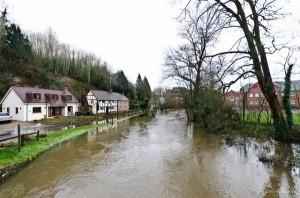School Wildlife pond -Wildlife. Part 2.
This is the secound in a series about creating a school wildlife pond. Others are:
School Wildlife ponds
Planting school wildlife ponds
A low nutrient level of pond water is required for maximum pond wildlife and diversity. Tap water is often full of nutrients which cause undesirable algal growth in ponds. So, try diverting rain water from roof guttering and to use water butts to fill and top up your school wildlife pond, if the pond is quite near to the school buildings, for maximum wildlife value.
Top tip – * A pond that has adjoining habitats such as a ditch, hedge and a meadow strip nearby, will be home to more varied wildlife, so try to link other natural habitats to your wildlife pond.
Wildlife you can expect to find;
- Amphibians; frogs, toads, newts.
- Reptiles; lizards, slow worms, grass snakes.
- Birds.
- Invertebrates; snails, beetles, water bugs- such as pond skaters and water boatmen. Dragon flies and damsel flies, small crustacea, water stick insect.
Frogs.
Frogs are the first amphibians to become visibly active; from February onwards, appearing first in in the warmer parts of the UK. After the eggs and spawn are laid, frogs tend to stay close to water. Common Frog – is variable in colour including shades of red, yellow, green, brown and even blue with dark spots or markings on legs and body. Green Frog group – These frogs are larger then the Common Frog. The Green Frogs group are shades of green or brown, with stripes or spots. Adults have loud calls in May and June. Common toads and newts are more active from March onwards when they will migrate to their breeding ponds. After laying their eggs and spawn, toads will leave the ponds to forage over land.
Newts.
Smooth newt is widespread, in garden and school ponds. Palmate newt is found in most parts of the UK except East Anglia and East Midlands. Great Crested newt tends to be rarer; it favours larger ponds or lakes; numbers have declined due to habitat loss.
Reptiles.
These may occur near to the wildlife pond. Grass snakes are a predators of frogs, toads and newts; they are closely associated with water and can swim. They lay their eggs in warm places, old tree stumps or compost heaps and can live in sunny sheltered grassland near to water.
Slow worms like tussocky grassland especially sunny grassy banks; they are declining due to habitat loss. Add a wild flower meadow area near to the pond and this will attract wildlife such as slow worms.
Common lizard or Viviparous lizard need grassland or heathland habitat, piles of rock in sunny places, sunny walls; these could be adjoining ponds or playing fields. The Common lizard is also declining due to habitat loss.

Most dragon flies prefer still or slow-flowing water and so are heavily dependant on ponds and ditches for survival. Planting a variety of nectar rich plants will attract insects, such as damsel flies and butterflies.
